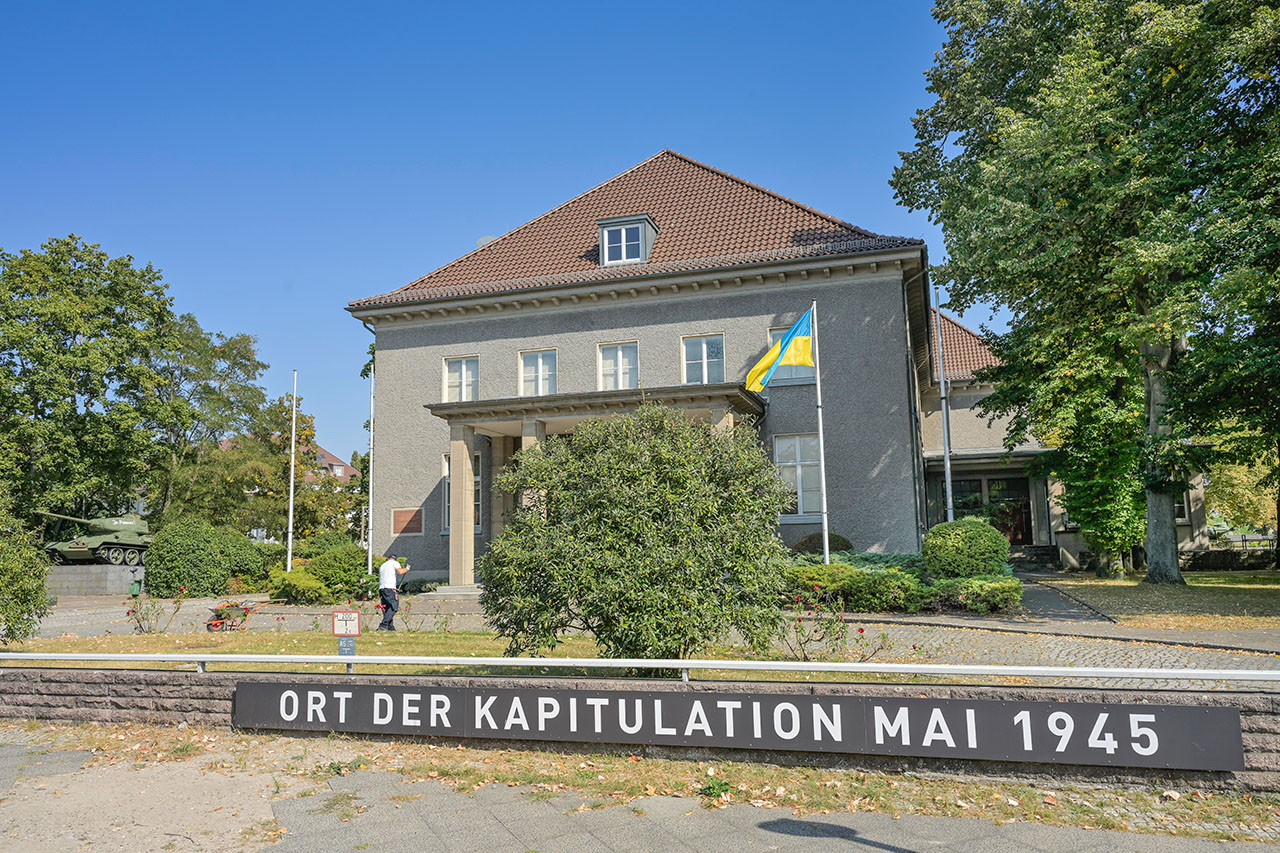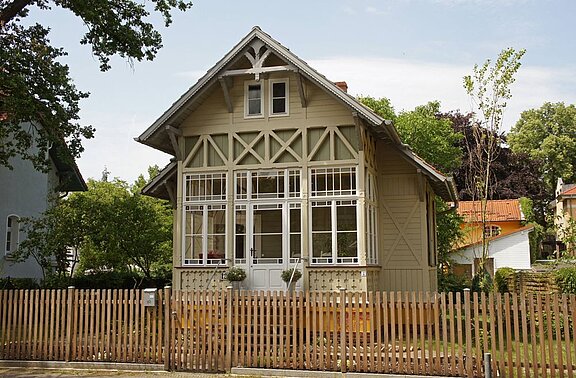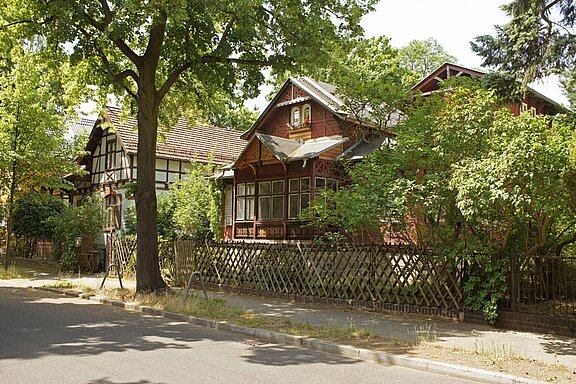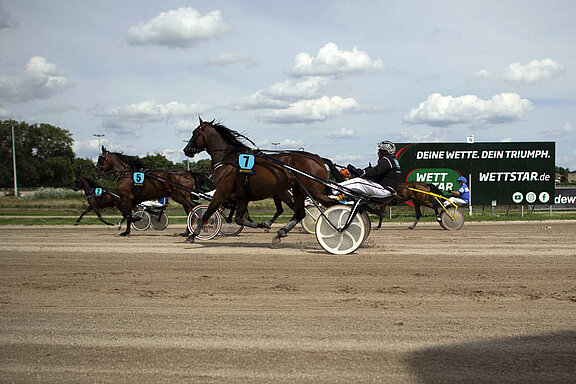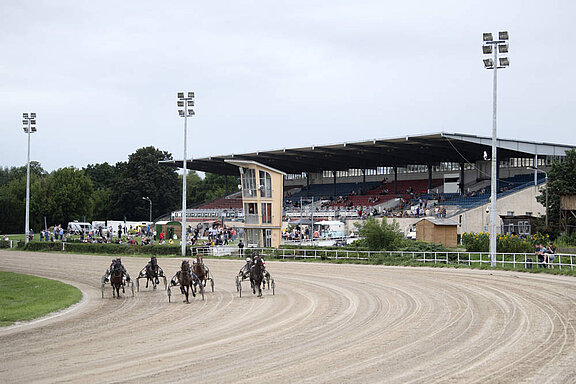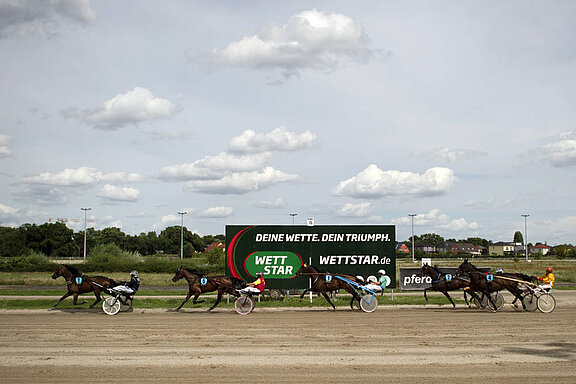Lots of greenery, lots of culture and a crucial place in German history: Karlshorst is celebrating its 130th anniversary this year and has a lot to tell.
Highlights and sights at a glance


Biesenhorster Sand
The "Biesenhorster Sand" nature reserve covers approximately 108 hectares. A remarkable variety of animal and plant species live here, making it a truly unique area. The area has a rich history: in earlier times, it was home to fields, an airfield, and military land. Today, great care is taken to disturb the flora and fauna of Biesenhorster Sand as little as possible. Nevertheless, you can still enjoy the beautiful natural surroundings along designated paths.
Karlshorst Airport Hangars
At the Old Airfield
The former aircraft hangars of the Berlin-Friedrichsfelde Air Base were built in Karlshorst during the First World War. The Prussian military operated the 150-hectare site, where the six reinforced concrete hangars with strikingly large domes still stand today. Due to their unique architecture, these are the only remaining aircraft hangars from the First World War in Germany and are now a listed building. After the end of the war in 1918, the airport lost its importance, and companies moved in. After the end of the Second World War, the Soviet Army used the hangars from 1945 onwards as an infantry fighting vehicle base and as a vehicle workshop for the Soviet embassy.
Karlshorst Museum
Zwieseler Straße 4
May 8, 1945: In the officers' mess of the Wehrmacht barracks at Zwieseler Straße 4, Germany's unconditional surrender was sealed, thus bringing an end to World War II. At this historically significant site, the Karlshorst Museum today presents various perspectives on German-Soviet history in the 20th century, facilitating exchange and encounters between past, memory, and the present. The Karlshorst Museum has been located at this location since 1994 and is the only museum in Germany to commemorate the war of annihilation against the Soviet Union with a permanent exhibition.
Flora meeting
Hasensprung 29
After a stroll, you can relax at the Floratreff for a cozy, rustic meal among allotments. The homemade dishes from German and Russian cuisine range from solyanka, spiced meat, and various salads to hearty meat dishes. The dishes are also available to take away. Enjoy!
KAHO
Ehrenfelsstraße 3
The KAHO – Space for Culture is a theater "that isn't one at all." Built between 1948 and 1949, it was used as an officers' house by the Soviet Army until 1994. After that, it became a private theater. Since 2008, the listed building has been unused, but is currently being restored, renovated, and remodeled. The Stadtkultur Foundation, which owns the former theater, began its revival in 2018 and hosted an interim program in 2021 and 2022 with over 100 events on the theater's past and future. It is scheduled to reopen soon as a "multifunctional event venue in the heart of Berlin-Karlshorst."
Karlshorst Cultural Center
Treskowallee 112
Anyone looking to explore culture, be creative, and make new friends will find many opportunities to combine all of this at the Karlshorst Cultural Center! Here, you'll find music, theater, literature, cabaret, and art for all generations – puppetry and children's programs are also on the agenda. In the in-house gallery, the exhibitors' art alternates between all genres – international and intercultural. It's a vibrant place! Opening hours: Monday to Saturday, 10 a.m. to 6 p.m.
Prince's Quarter
The "Dahlem of the East" is the Prinzenviertel (Prince's Quarter) in the southeast of Karlshorst. Here, chic villas and country houses stand, impressing passersby with their magnificent facades. Kaiser Wilhelm II named the streets after his six sons, which is why it was given the name "Prince's Quarter." After World War II, the street names were changed. But the old splendor remains unmistakable to this day.
Karlshorst trotting track
Treskowallee 159
"So, where are they running?" As early as 1884, horses raced at the Karlshorst trotting track, watched spellbound by spectators in the stands. Steeplechase races were initially very popular, but since the post-war period, the animals have primarily competed here in trotting races. During the time of the Berlin Wall, the track doubled in size, and after reunification, it ran into financial difficulties. But the trotting continues nonetheless: at least one race is held every month between March and December. And if you'd rather just stroll around, you can visit large flea markets on the grounds on other days.
Forest settlement
Walking through the Karlshorst forest settlement, you feel a bit like you're in a historic model house development in a village: Small, two-story single-family and multi-family homes stand close together, painted in blue, red, or white. The houses have a cute yet simple appearance. The forest settlement was built in the 1920s based on designs by Hamburg architect Peter Behrens, a pioneer of functional architecture.



